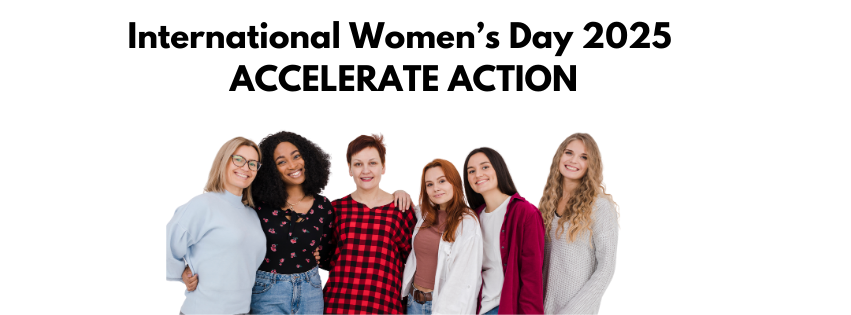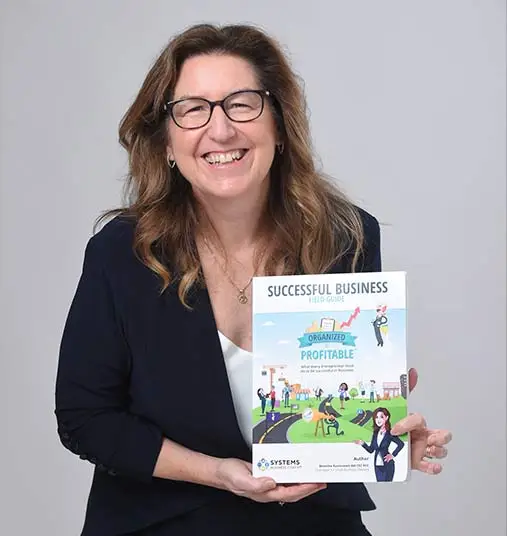International Women’s Day 2025 Keynote Speech
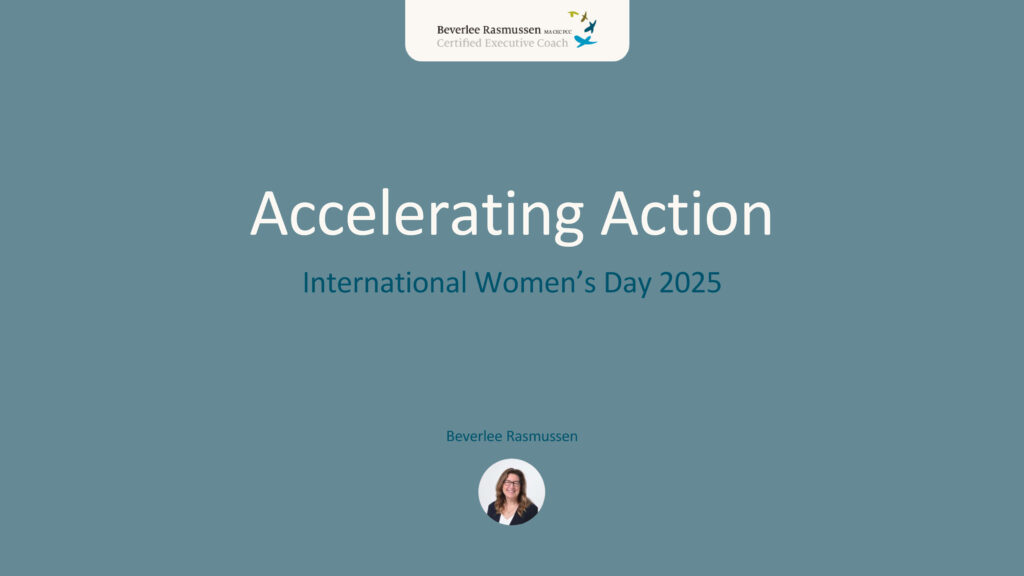
How do we accelerate action for greater gender equality in 2025 and beyond? Shares the history of how we have done this in the past through the bumps
Introduction: A Personal Story
A few years back I was driving to a restaurant with my dad and we were taking about my work. A few minutes into the conversation he stopped to ask me a question. Starting with “Don’t take this wrong”, he said, “Where do you get your credibility?” When I asked what do you mean, he said “You are a woman, a small woman, when I think of a business coach I think of a man in a blue suit” Mouth open had no words.
Didn’t’ matter … I had earned a graduate certificate in executive coaching, or that I had won the 2014 ICF Business Coach of the Year award and had a sold-out coaching practice with a two year waitlist.
To him, being a business coach was a job for a man in a blue suit. No amount of credentials, success, or experience could change the fact that, in his eyes, I was a woman doing work meant for men.
That was not the first time I encountered resistance for simply stepping into leadership as a woman. In 1998, when I joined the Rotary Club of Langley Central, I was “token woman #3.” A family member accused me of “contributing to the delinquency of his esteemed male organization.”
The club’s membership approval process typically took three to five weeks. For me, it took five months. And when I stepped into the role as the club’s first female president in 2006, it was the first and only time in history that an election was held for the position—pitting the only two women candidates in the club against each other.
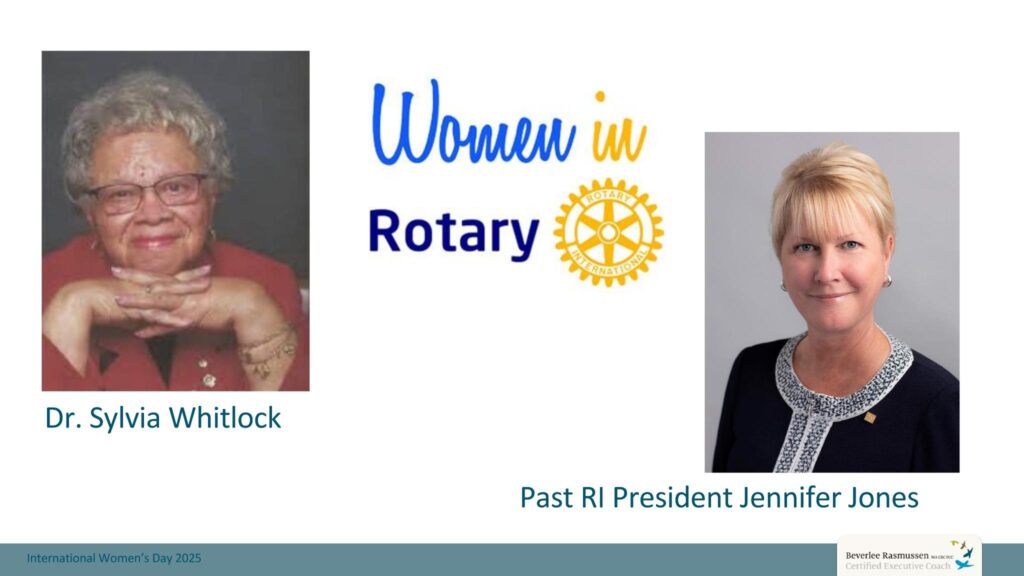
For most of Rotary’s history, this wouldn’t have even been possible. Women weren’t allowed to join Rotary International until 1987—just 11 years before I became a member. It took a ruling by the U.S. Supreme Court to force the change after women had been actively contributing to the work of Rotary for decades, without recognition. Even after the doors were legally opened, the culture took much longer to shift.
I remember sitting at my first Rotary meeting, feeling the weight of the unspoken question in the room: Does she belong here? The stares, the skepticism, the polite but dismissive nods—it was clear that despite my business success, I still had to prove myself.
And prove myself, I did. I showed up, week after week, engaged in every conversation, demonstrated my value, and eventually earned their respect. It took five months of persistence—a test that my male counterparts never had to endure.
But look at where we are now.
Women now make up between 30-50% of Rotary club memberships across Canada. We are no longer just ‘tokens’—we are leaders, presidents, and district governors.
This shift didn’t happen overnight. It didn’t happen by chance.
It happened because women stepped forward—not just to demand a seat at the table, but to contribute, to lead, and to expand what was possible.
Leaders like Sylvia Whitlock, who in 1987 became the first female president of a Rotary Club after the U.S. Supreme Court ruled that women must be allowed to join.
Leaders like Jennifer Jones, who shattered the highest ceiling in Rotary’s history by becoming the first female international president in 2022-23—right here from Canada.
And leaders in communities everywhere—including so many in this room—who worked to ensure that when women entered Rotary, we didn’t just fill quotas—we shaped the future of our clubs and our communities.
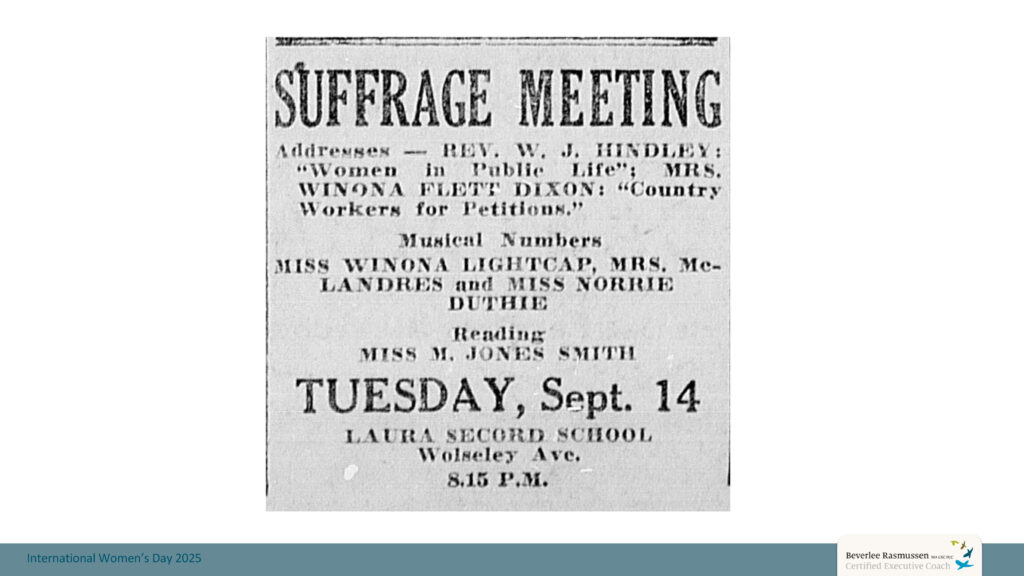
To truly appreciate how far we’ve come, we need to step back in time.
When women finally gained suffrage—the right to vote—their voices could no longer be ignored. My great-grandmother was 33 years old before she was finally allowed to cast a ballot.
It was a turning point, opening the door to legal reforms that followed: equal guardianship between parents, marriage protections, and survivor benefits.
Even then, progress was slow. It wasn’t until 1929 that women were legally recognized as “persons” in Canada.
And it took until 1982 for the Canadian Human Rights Act to explicitly forbid discrimination based on sex and ensure equal pay for equal work. As of 2022, women in Canada earned approximately 90 cents for every dollar earned by men, we are getting there!
—————————————–
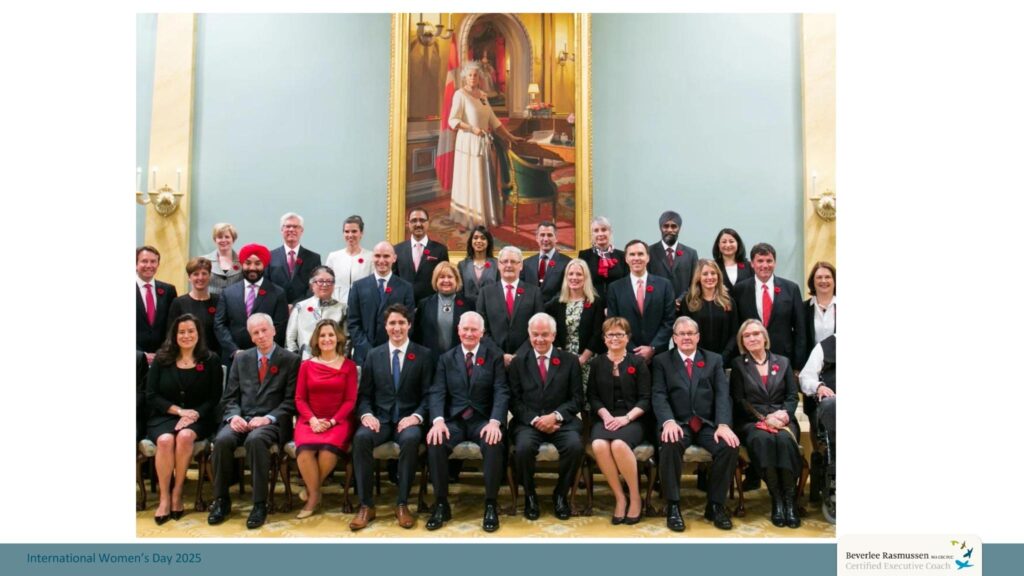
As recently as 2015, Canada signed the Charter of Rights and Freedoms to include sex as a protected ground against discrimination. That same year, for the first time in history, Canada appointed an equal number of men and women to the Cabinet.

The world I was born into looked very different from today. Opportunities for women were limited, expectations were rigid, and equality was still a distant dream.
• In the 1960s, Pan Am stewardesses had to meet a height requirement, maintain a set weight, resign if they got married, and face mandatory retirement at age 32.
• A bank could refuse to issue a credit card to an unmarried woman, and even if she was married, her husband was required to co-sign.
• Most professional careers were closed to women—medicine, law, engineering, and finance were dominated by men, and women faced explicit hiring discrimination.
• Pregnancy was a fireable offense.
This was the reality for women in the 60’s. Legal rights, financial independence, and career opportunities were out of reach.
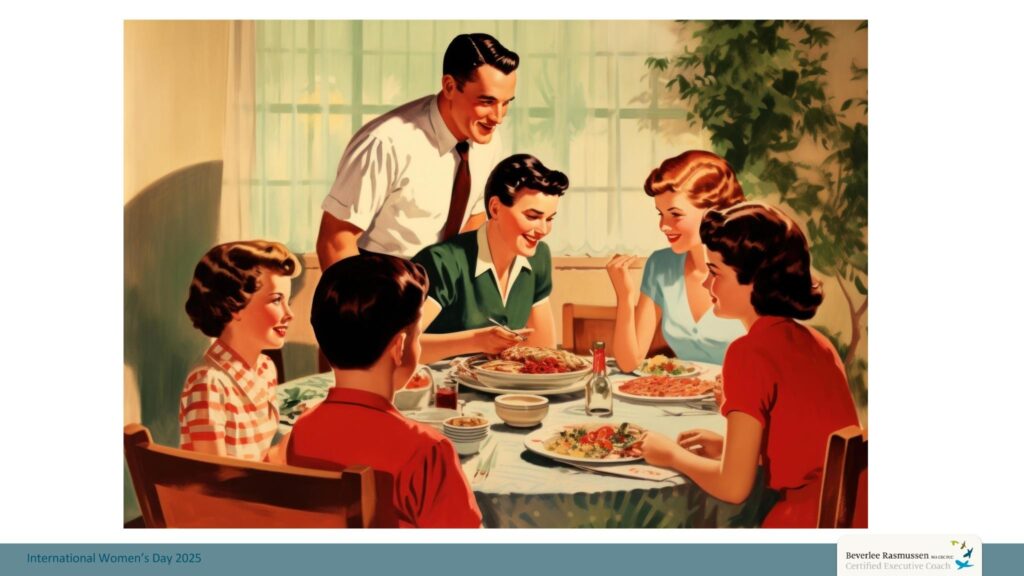
For generations, men and women understood their roles—whether we agree with them today or not. In the 1950s, men were expected to work, provide, and protect. Women were expected to nurture, support, and raise families.
Then came the next generation—the one I was born into. Laws were beginning to change, and cultural expectations were starting to shift. The message to women was still confusing, contradictory, and often impossible to navigate.”
————————————————
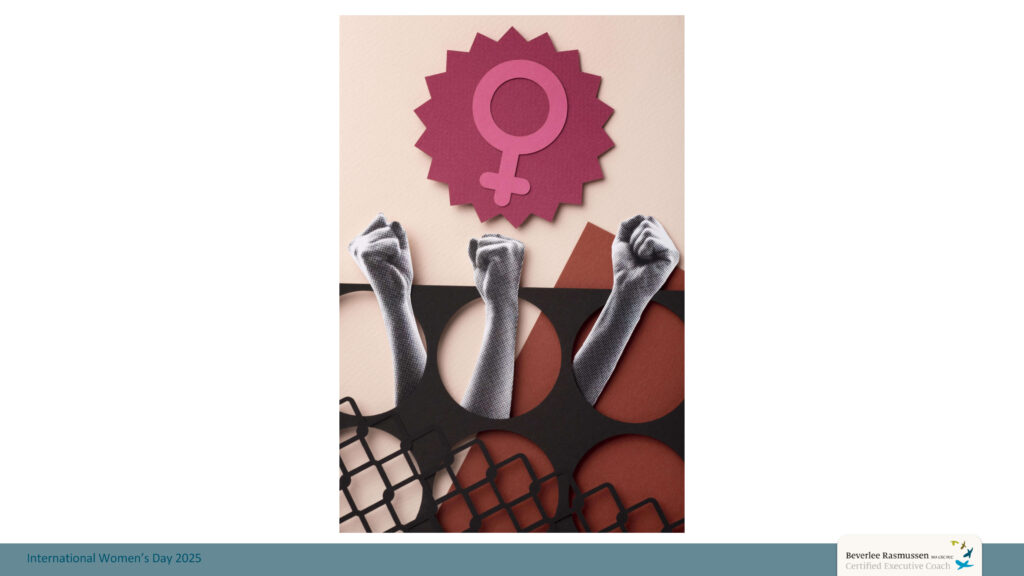
As a young girl, growing up in the 70’s, I received contradictory messages about what it meant to be a woman. I was told to be educated, strong, independent. Don’t rely on a man. Don’t cook for a man. Don’t nurture him. Feminine qualities were dismissed as weaknesses. Male-bashing was common. (and sadly, still is) Divorce rates skyrocketed in the 1970s, leaving a generation of children from then-called “broken homes.”
That conflicting narrative left me uncertain about love, partnership, and my own worth—leading me into a series of unhealthy relationships, including a violent first marriage. I wasn’t alone in that struggle. Many of us were navigating a world where expectations had changed, but clarity had not.
In the 1970s, suddenly, men were the enemy. The message shifted from “women deserve equality” to “women don’t need men.” The traditional model was gone, but in its place was confusion, resentment, and power struggles that still linger today..
The role they were taught to play—provider, protector, head of the household—has changed. It used to be simple: go to work, make your wife happy, get fed, have a beer, cut the lawn, make love, have kids. Now, the rules aren’t as clear, and many feel displaced, unheard, or even unwanted.
Across the world, we see a growing push to reassert traditional power structures.
Some are responding with frustration and anger, feeling as though things have been taken from them. Instead of addressing this shift in a constructive way, some are using it as justification to exert control over women—trying to reverse progress rather than create balance.
——————————————–
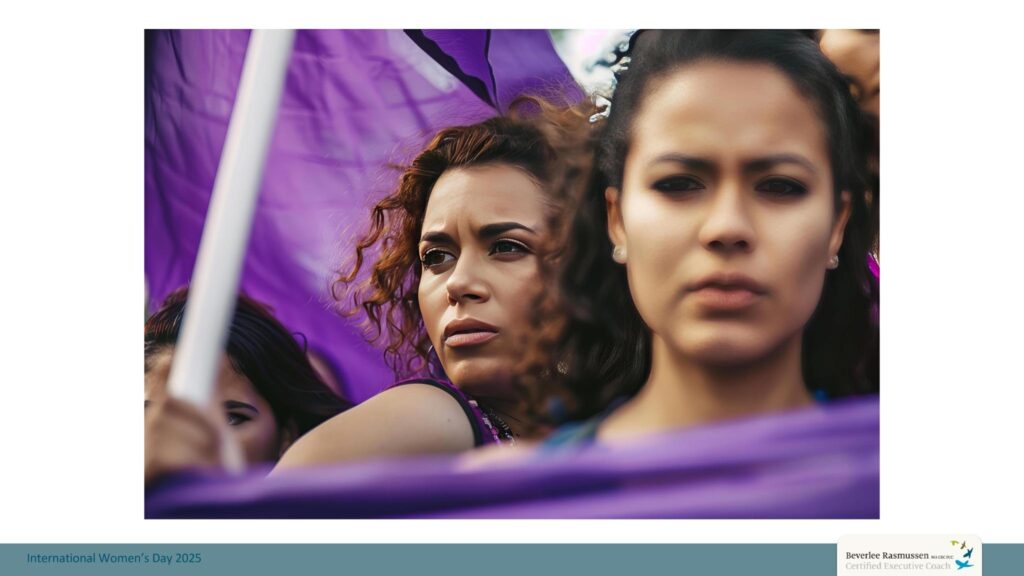
We take for granted the freedoms and rights women have fought for. And yet, around the world, those rights are being clawed back.
- In the U.S., the loss of reproductive rights has resulted in women with ectopic pregnancies being left to die in hospital hallways because doctors fear legal repercussions.
- In Afghanistan, girls and women have been stripped of their right to education and work. Schools and universities are closed to them, and female professionals—including doctors and teachers—have been forced out of their jobs, erasing decades of progress in just a few years.
- In Iran, the government has recently intensified its enforcement of compulsory hijab laws. The introduction of the “Hijab and Chastity” bill imposes severe penalties on women who defy these mandates, including fines and imprisonment of up to 10 or 15 years.
That push to return to an old-fashioned family structure isn’t just playing out in politics, policies, and laws—it’s happening in our homes, our relationships, and our everyday lives.
For many women, this isn’t just a political debate—it’s personal. It shapes the way we are treated, the way we are expected to behave, and the choices we feel we have.
I know this firsthand.
I lived in a world where a man’s control over a woman wasn’t just expected—it was enforced. Not by laws, but by the unspoken rules of power, dependency, and fear. I felt that loss of autonomy, not on a national stage, but in my own home.
And for a long time, I didn’t even realize how much control I had given away—until I was forced to take it back.
At 27, after leaving my first marriage due to domestic violence, I attended a support group where the facilitator told me, “It’s not your fault.” And while that brought temporary comfort, I woke up at 2 AM in a sweat with a terrifying realization:
If it wasn’t my fault, then I had no control over it happening again.
I could cycle through partners for the rest of my life, hoping I wouldn’t get hit again. Or, I could take 100% responsibility for my choices, my behavior, and my life. I realized:
- I had chosen that relationship
- I had chosen to keep going back.
- I had chosen to believe I could fix him.
As a single mother, I knew I had to make better choices—starting with my own emotional and financial stability. That was when I started my business. I didn’t wait for permission or for someone to lead the way.
I built my own future.
For the last 30+ years, I have been happily married to Brent, embracing my roles as a mother, nurturer, powerful business owner, partner, and peacemaker. I didn’t have to choose between power and femininity. I claimed both.
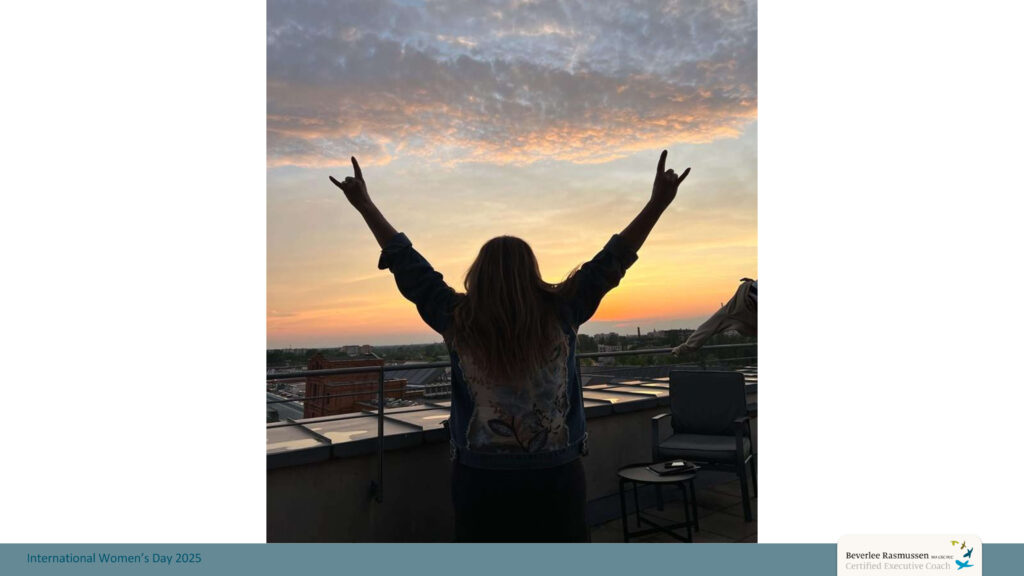
We, as women, have more power than we realize. And we must use it—not to fight men, not to claim dominance, but to create a world where we can thrive together.
What I have learned is that we can care for the men we love without surrendering our jobs or our control over our bodies. We can be fully feminine (should we choose), while embracing all the power that includes.
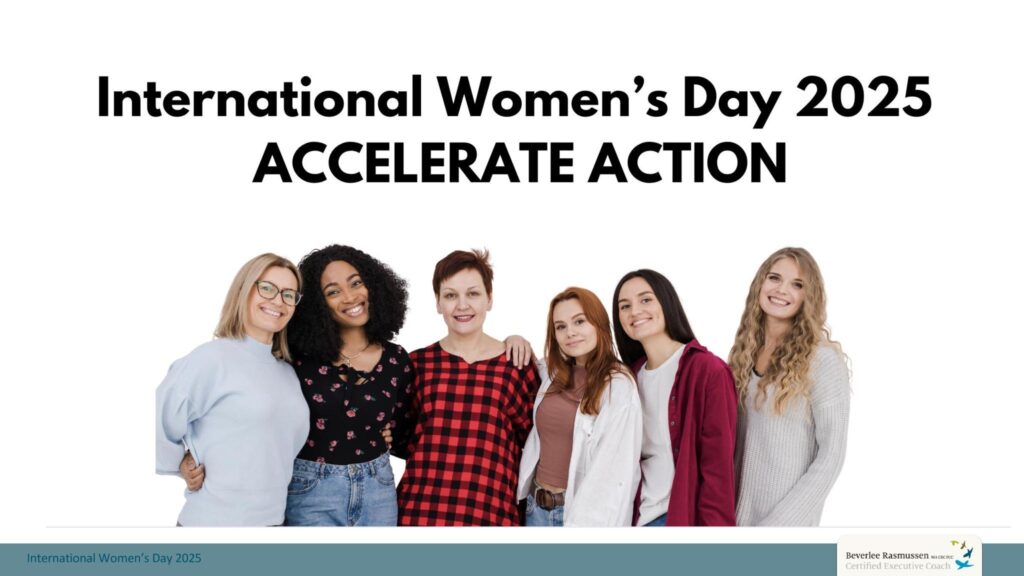
That brings me back to today’s theme “Accelerating Action for Gender Equality”
At the current pace, gender equality is still 135 years away. Five generations from now. That’s far too long. International Women’s Day 2025 calls on us to Accelerate Action—to move beyond frustration and drive real change.
But how do we move forward faster? We’ve tried blaming men, but that hasn’t worked.
For me, the real shift came when I stopped looking at the problem—and started building on what was possible.
—————————————-
I used Appreciative Inquiry to create a new path forward.
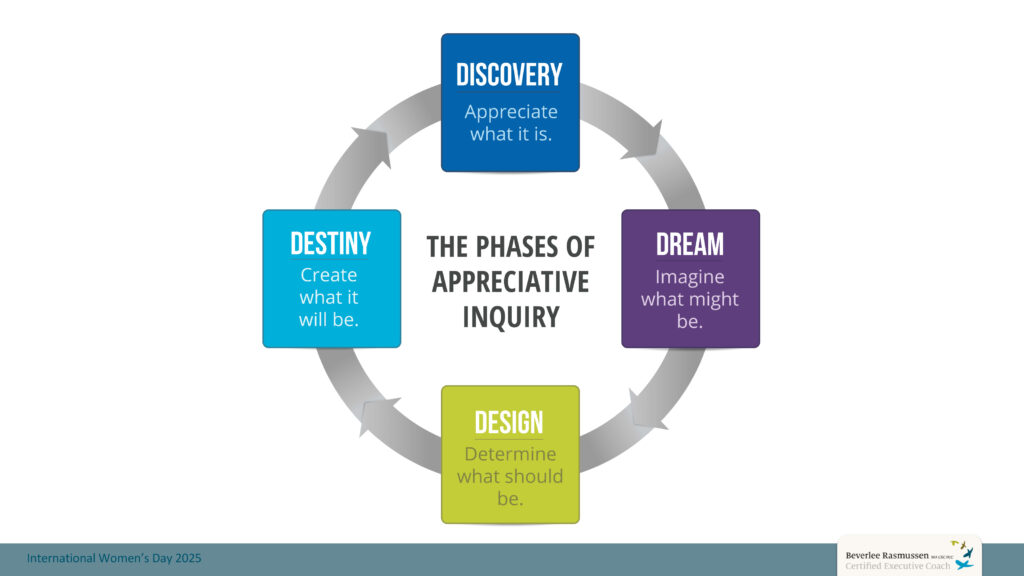
Most approaches to solving problems start with analyzing what’s broken, what’s missing, and what needs fixing. We’re taught to believe that progress happens by identifying the gaps and working to close them.
But what if that’s slowing us down?
What if the fastest way to solve a problem isn’t to fix what’s broken, but to expand on what’s already working? That’s the power of Appreciative Inquiry—a four-stage process designed to accelerate real change.
Discover: What is already working? What strengths, successes, and progress can we recognize?
Dream: What do we want to create? What is the future we envision for ourselves, our communities, and the next generation?
Design: How do we build on what we have? What steps can we take to expand, strengthen, and accelerate the change we seek?
Destiny: How do we take action—together? How do we turn our vision into reality, using our collective strengths to create lasting impact?
That is how we accelerate action. That is how we can create real change.
Appreciative Inquiry (AI) flips the script. Instead of focusing on deficits, it focuses on strengths—on what’s already working and how we can expand it. It shifts our perspective from problems to possibilities and helps us build the future we want.
It’s not about ignoring the problem—it’s about finding solutions that work faster, last longer, and create real impact.
And we see this in action all the time.
For me, instead of focusing on the pain of my past, I asked:
What strengths got me here?
What do I want my future to look like?
What small steps can I take to build the life I want?
Today I’m in a strong, loving relationship, leading work I care deeply about, and living my own happily-ever-after. Not because I ignored the past, but because I stopped complaining and blaming and started designing a better future.
This is what Appreciative Inquiry does—it moves us from stuck to momentum.

This month, the Rotary Magazine introduced us to Virginia McKenzie, founder and charter president of the Rotary Club of the Pacific Northwest Ending Sex Trafficking.
Virginia could have spent years just complaining about the growing violence and human trafficking in her Aurora neighborhood. She could have lobbied, protested, or written reports about how bad the situation had become.
But she did something radically different.
She asked:
Where are people already making a difference?
What’s working in communities that have successfully reduced trafficking?
How can we create lasting change instead of just treating the symptoms?
Using the process of Appreciative Inquiry, she identified existing strengths in law enforcement, survivor advocacy, and community education. Instead of getting stuck in the frustration of the problem, she brought people together to amplify the solutions that already worked.
Today, because of her work, real change is happening. Her efforts have helped disrupt trafficking networks, educate at-risk individuals, and create safer neighborhoods.
Virginia didn’t wait for permission. She didn’t wait for someone else to fix it.
She accelerated action—by focusing on what was possible.
Appreciative Inquiry isn’t just personal—it’s how real change happens at scale. Some of the most important legal advances for women in Canada happened because together we focused on what could be done instead of what wasn’t working. Here are three examples:
———————————-
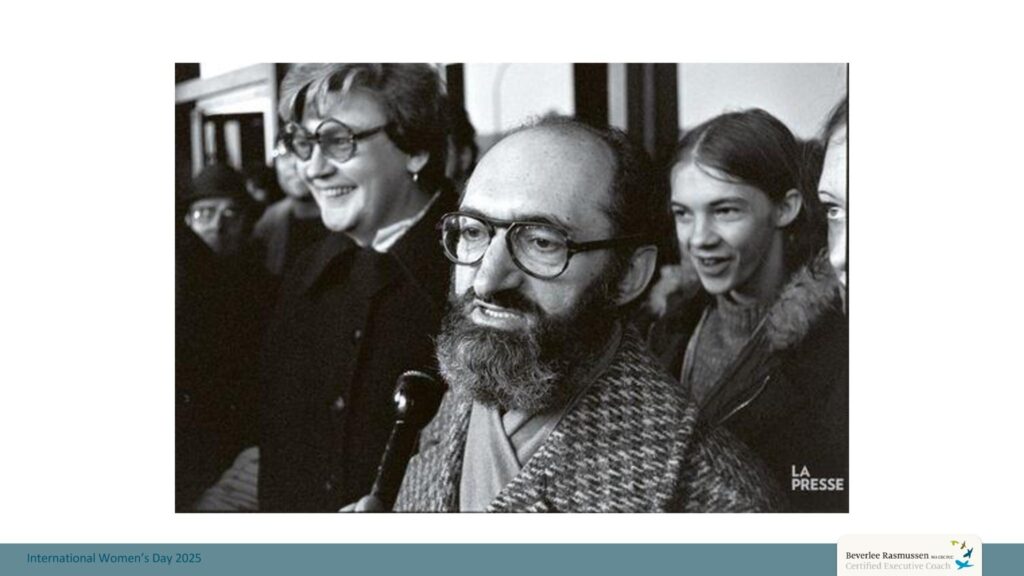
1. Dr. Morgentaler’s Supreme Court Win (1988) – The Fight for Reproductive Rights
For years, women in Canada faced criminal charges for seeking abortions, and doctors risked jail time for providing them. Instead of only protesting the injustice, Dr. Henry Morgentaler and the women who fought alongside him focused on a vision of bodily autonomy and legal protection.
By taking their case to the Supreme Court and presenting a vision for safe, legal reproductive healthcare, they permanently changed the law in 1988, striking down Canada’s abortion restrictions. They didn’t just fight oppression—they built a better system.
————————————
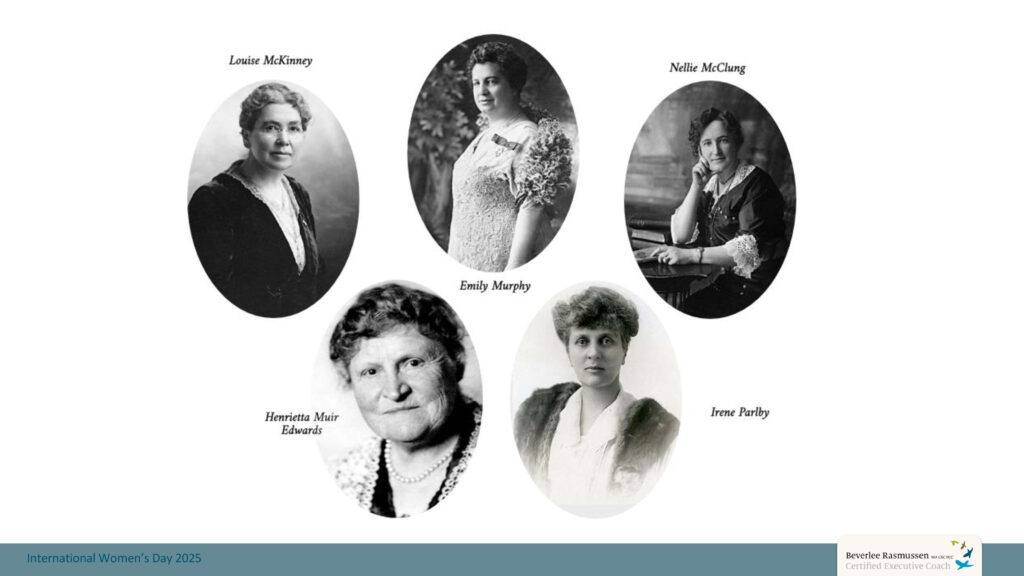
2. The ‘Persons Case’ (1929) – Women Legally Recognized as Persons
For decades, Canadian women were not legally considered ‘persons’ under the law, meaning they were excluded from the Senate and many leadership roles. Instead of accepting defeat, five women (known as the Famous Five) asked a different question:
Who has already expanded women’s rights in the legal system, and how can we do the same?
They took their case beyond Canada to the British Privy Council, which ruled in their favor. Because of their work, women were officially recognized as ‘persons’ in 1929. Their approach wasn’t just about pushing against barriers—it was about designing a future where women were respected, included, and treated as equals.
——————————————
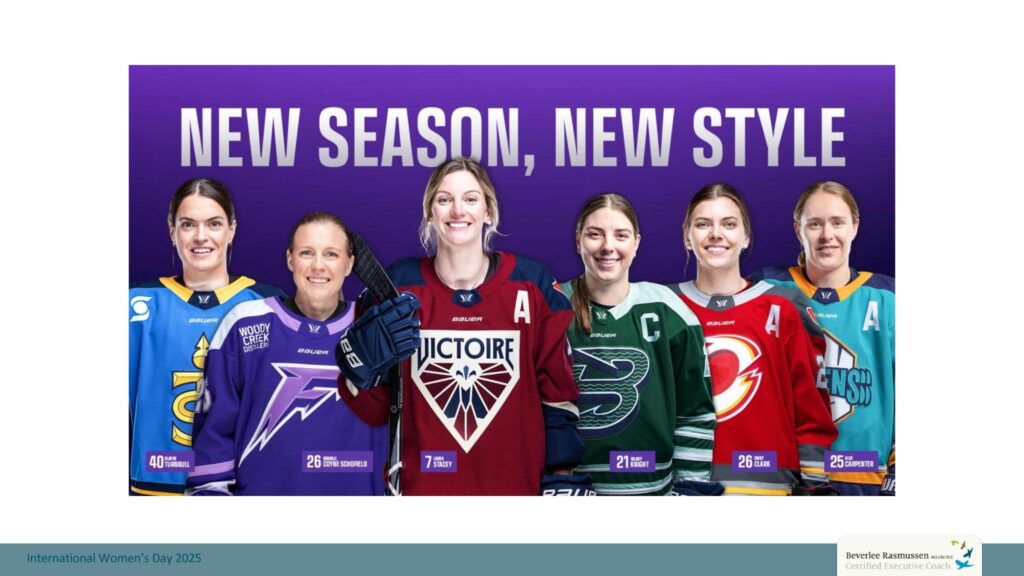
3. The Professional Women’s Hockey League (PWHL) – A League of Their Own
On a lighter note, this year marks a historic moment for women in sports—the launch of the Professional Women’s Hockey League (PWHL) in Canada.
For decades, women’s hockey was undervalued, underfunded, and often dismissed as a second-tier sport. Rather than waiting for validation, women in the sport built their own path forward, advocating for investment, equal pay, and professional opportunities.
Now, with the PWHL officially launched, women finally have a professional hockey league of their own—creating a legacy for future generations of female athletes.
This isn’t just about sports—it’s about women claiming space, breaking barriers, and proving that when we focus on possibilities instead of obstacles, real change happens.
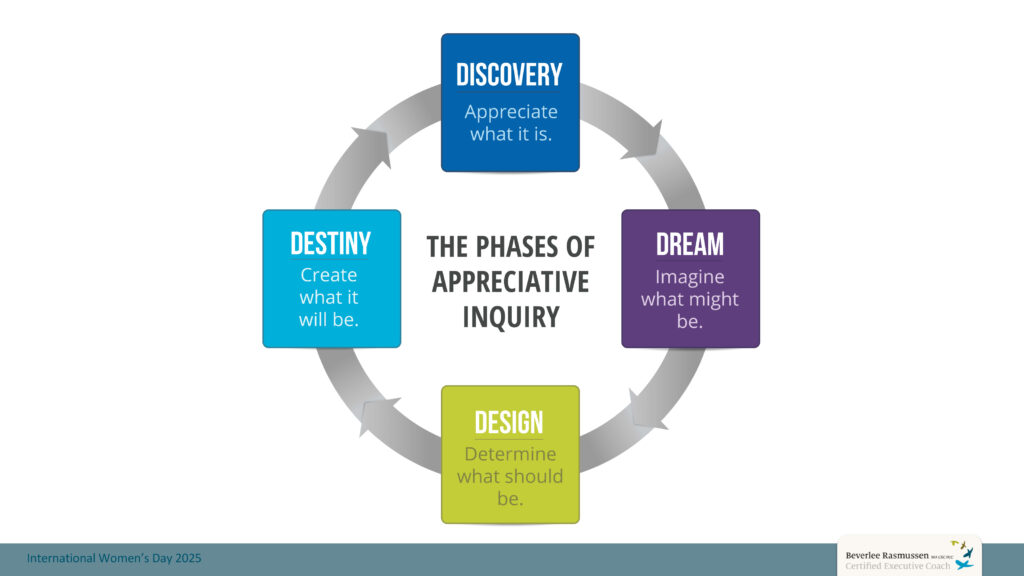
Applying Appreciative Inquiry isn’t just a concept—it’s how we turn today’s conversations into tomorrow’s breakthroughs.
This process isn’t just for personal growth or big social issues—it’s for us, right now, in this room.
We are gathered here on International Women’s Day because there is still work to do. Women around the world continue to face violence, economic instability, and systemic barriers.
In too many places, women’s health remains underfunded, workplace opportunities are still unequal, and safety is not guaranteed. Political conflict and war put women and children at greater risk of exploitation and abuse.
These are not distant problems. They are happening now.
———————————————–
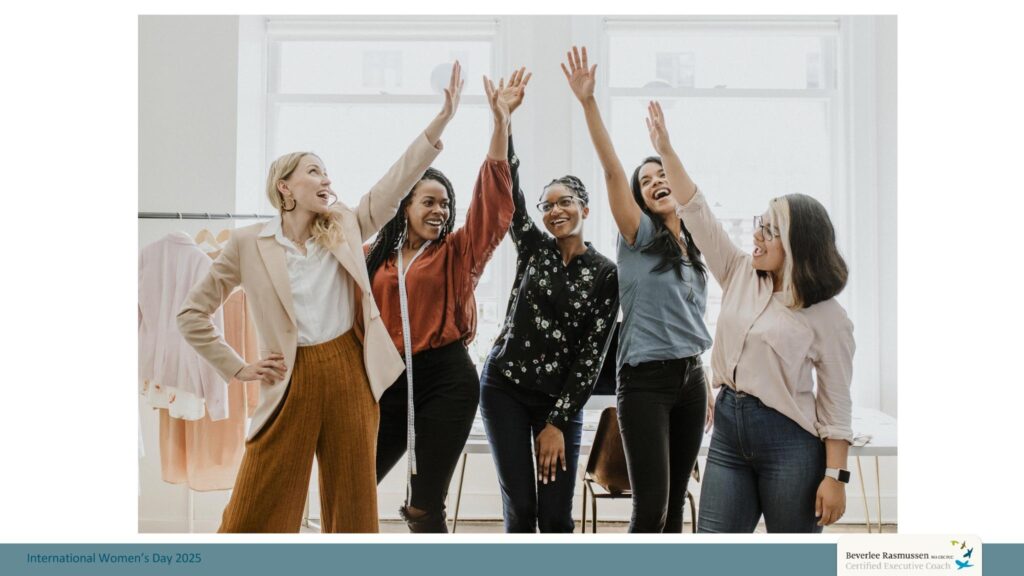
But here’s the shift we CAN make today:
Instead of saying, “Women’s health has been overlooked for too long.”
We ask, “Where is investment in women’s health already happening, and how do we expand it?”
Instead of saying, “The workplace is still unequal.”
We ask, “Where have we already made gains in workplace equality, and how do we accelerate them?”
Instead of saying, “Violence against women is everywhere.”
We ask, “Who has successfully created safer communities and healthier relationships, and how do we learn from them?”
The world does not need more division, blame, or despair. It needs action. It needs us to take responsibility—not for what has been done to us, but for what we choose to do next.
On this International Women’s Day, we have a choice.
We can continue pointing at the problems—or we can accelerate action by amplifying what works.
So, I ask you:
What issue needs your attention right now?
Who is already making progress in that area?
How can you use your strengths to contribute, accelerate, and expand that impact?
This is how we move forward—not just faster, but stronger.
This is how we accelerate action.
